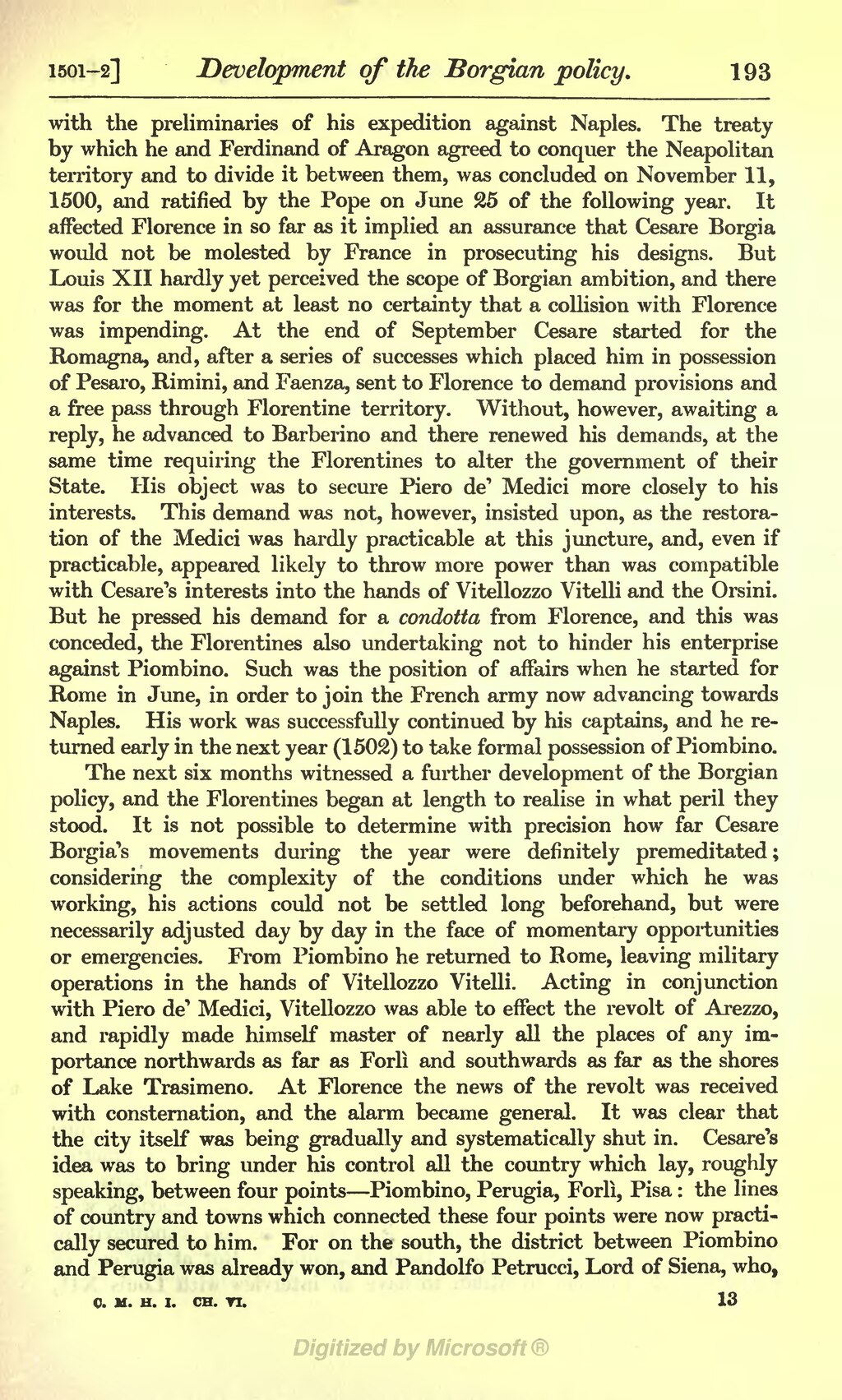with the preliminaries of his expedition against Naples. The treaty by which he and Ferdinand of Aragon agreed to conquer the Neapolitan territory and to divide it between them, was concluded on November 11, 1500, and ratified by the Pope on June 25 of the following year. It affected Florence in so far as it implied an assurance that Cesare Borgia would not be molested by France in prosecuting his designs. But Louis XII hardly yet perceived the scope of Borgian ambition, and there was for the moment at least no certainty that a collision with Florence was impending. At the end of September Cesare started for the Romagna, and, after a series of successes which placed him in possession of Pesaro, Rimini, and Faenza, sent to Florence to demand provisions and a free pass through Florentine territory. Without, however, awaiting a reply, he advanced to Barberino and there renewed his demands, at the same time requiring the Florentines to alter the government of their State. His object was to secure Piero de' Medici more closely to his interests. This demand was not, however, insisted upon, as the restoration of the Medici was hardly practicable at this juncture, and, even if practicable, appeared likely to throw more power than was compatible with Cesare's interests into the hands of Vitellozzo Vitelli and the Orsini. But he pressed his demand for a condotta from Florence, and this was conceded, the Florentines also undertaking not to hinder his enterprise against Piombino. Such was the position of affairs when he started for Rome in June, in order to join the French army now advancing towards Naples. His work was successfully continued by his captains, and he returned early in the next year (1502) to take formal possession of Piombino.
The next six months witnessed a further development of the Borgian policy, and the Florentines began at length to realise in what peril they stood. It is not possible to determine with precision how far Cesare Borgia's movements during the year were definitely premeditated; considering the complexity of the conditions under which he was working, his actions could not be settled long beforehand, but were necessarily adjusted day by day in the face of momentary opportunities or emergencies. From Piombino he returned to Rome, leaving military operations in the hands of Vitellozzo Vitelli. Acting in conjunction with Piero de' Medici, Vitellozzo was able to effect the revolt of Arezzo, and rapidly made himself master of nearly all the places of any importance northwards as far as Forli and southwards as far as the shores of Lake Trasimeno. At Florence the news of the revolt was received with consternation, and the alarm became general. It was clear that the city itself was being gradually and systematically shut in. Cesare's idea was to bring under his control all the country which lay, roughly speaking, between four points—Piombino, Perugia, Forli, Pisa: the lines of country and towns which connected these four points were now practically secured to him. For on the south, the district between Piombino and Perugia was already won, and Pandolfo Petrucci, Lord of Siena, who,
